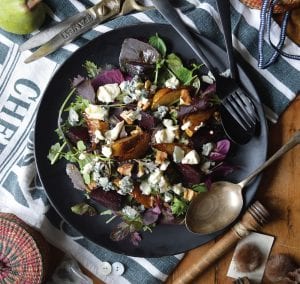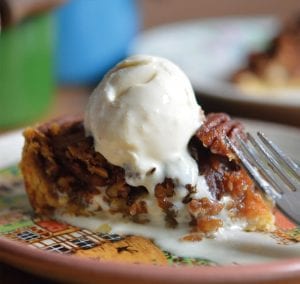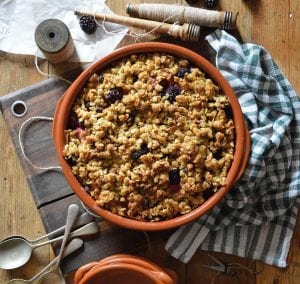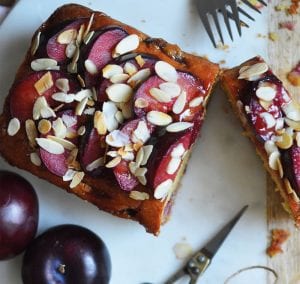December is crazy-busy for one and all so Katie Kingsley created recipes that sparkle without imprisoning us in the kitchen, away from the well-deserved merriment!
Maple Roasted Brussels sprouts with honeyed chorizo

We are not a sprout family but this recipe has converted us. Leave out the sprouts if you must and just try the honeyed chorizo as a tapas with a drink… it will definitely be on our table this Christmas, jewels of deliciousness!
Heat oven to 200°C. Halve about 1kg of Brussels sprouts then toss in 3tbsp of rapeseed oil, 1 tbsp of maple syrup and season. Bake for 40 minutes in a pre-heated oven, turning halfway through cooking until crisp and golden. In the meantime, chop or break up (for tapas, double or triple the quantity) 100g of chorizo and toss with a drizzle of runny honey, 1tsp of paprika, 1tsp of fennel seeds and sauté for a few minutes until golden. Place 40g of pecans on an oven tray and bake for about five minutes (careful as they burn quickly) then roughly chop and add to the cooked Brussels with the chorizo.
Christmas “Pot Luck” pie

Named so because it is made up of leftover meat, potatoes and veg, so who knows what lurks beneath the puff… only the lunch guests from the day before! A penny-wise, practical pie and a hearty alternative to bubble and squeak after bountiful prosecco consumption.
Heat oven to 200°C. Take a casserole or large saucepan and add 475g of diced chicken thighs (try to keep pieces largish), 200g of halved new potatoes, 200g of cooked ham (again, large chunks are better), three finely diced celery stalks, one leek sliced into 1cm rounds, three cloves garlic (minced), 200ml of chicken stock and 5tbsp of single cream. Bring to a boil then simmer with lid on for about 30 minutes. Drain the mix over a sieve, keeping the liquid for the roux (you will need about 350ml) which you can make up with more cream or milk, if needed. Make a roux by melting 45g of butter in a small-medium sized saucepan, add 50g of plain flour, 1 tbsp at a time, stirring continuously so the flour cooks and forms a ‘glob’ then add your reserved liquor about a third at a time, stirring continuously so you end up with a thick, smooth consistency. Add a grating of fresh nutmeg, a handful of chopped parsley and season to taste then combine it with the pie filling. Leave to cool. Beat an egg yolk with 1tbsp of milk in a small bowl and wet around the rim of your pie dish (about 25cm diameter) and unroll a sheet of ready-rolled puff pastry. Cut a few strips off the shorter end and place around the lip of your pie dish then ladle in your cool pie filling and place the rest of the pastry on top, pinching the edges and cutting off any over-hanging pastry. Brush the top with your egg wash then create designs, if you desire before brushing over these and making a 2cm slit in the middle. Bake in the hot oven for about 25 minutes, when the top should be crisp and golden.
Dutch Christmas log

Pastry and almond with a hint of festive orange, this recipe is very simple to knock-up and great with coffee between breakfast and lunch. Use a pre-made marzipan if you want to speed it up a notch, almost makeable in an ad break! Some good uses for leftover almond paste are to add to mince pies, crumble or stollen.
Heat oven to 200°C. In a large bowl, combine 400g of ground almonds, 200g of icing sugar, two egg whites, 1tsp of almond extract and the zest of an orange. Wrap in cling-film and leave in the fridge for at least 15 minutes. Unroll a sheet of ready-rolled puff pastry and when ready take out your almond paste from the fridge, roll into a long sausage shape along the long end of the pastry sheet leaving a one-inch border on one end and both sides. Whisk an egg yolk with 1 tbsp of milk and brush around the border then fold the two shorter sides over the ends of the sausage and roll so that the seam joins at the bottom. Transfer to a baking tray lined with parchment. Brush with the egg wash and bake for about 25 minutes, or until browned. Gently heat 2 tbsp of apricot jam and brush over the log then sprinkle with chopped toasted almonds and finish with a dusting of icing sugar.
















